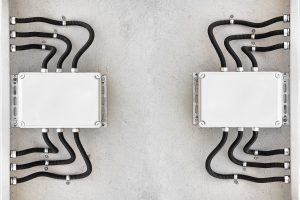 It goes without saying that there are a variety of methods to ensure proper thermal management within an overheating application, and each one could be better suited for specific industries, tasks, and more. Indeed, the basis of our products stems from eco-friendly technologies and methods, such as heat spreading, movement, and dissipation. This is to ensure higher efficiency as well as eco-consciousness, and we are ready to work with you to create your ideal product. In today’s blog, the team at Noren Thermal Solutions in Taylor, TX takes a look at thermoelectric methods in particular, and how they can optimize your application function in a relatively simple manner.
It goes without saying that there are a variety of methods to ensure proper thermal management within an overheating application, and each one could be better suited for specific industries, tasks, and more. Indeed, the basis of our products stems from eco-friendly technologies and methods, such as heat spreading, movement, and dissipation. This is to ensure higher efficiency as well as eco-consciousness, and we are ready to work with you to create your ideal product. In today’s blog, the team at Noren Thermal Solutions in Taylor, TX takes a look at thermoelectric methods in particular, and how they can optimize your application function in a relatively simple manner.
Subsequent Cooling and Heating
For a variety of companies, being able to rapidly cool industrial applications is a must. As a matter of fact, pretty much every machine, regardless of composition, function, or needs, share the common need to remove waste heat from their sensitive wires and enclosures. After all, overheating is a universal concern that affects humans, animals, and equipment alike.
This also means that methods to remove the waste heat that is produced is necessary as well. Indeed, overheating machines can lead to a temporary breakdown, electrical fires, and permanent damage if not taken into account. Because of this, a way to regulate internal temperatures while also enhancing a device’s performance is a hot commodity in a variety of industries. Fortunately, thermoelectric solutions can help. To learn more about this process, reach out to a representative from our team today.
Utilizing Electrical Junctions
When utilizing thermoelectric methods to regulate internal temperatures, what is occurring is that a temperature difference is created as waste energy is transferred back and forth between two electrical junctions. As this occurs, a voltage is applied across the two conductors, which are joined together, to create an electrical current.
The electrical current that makes its way through the circuit contains the waste heat, and when it moves away from one conductor to the other, the result is the subsequent cooling of that junction as the other increases in temperature. The process is regulated by constantly transferring this energy back and forth, thus ensuring that the device does not overheat. To learn more about this process, reach out to our team today.
Which Applications Benefit?
When determining which applications will benefit most from thermoelectric coolers, it largely depends on the needs and parameters of the industry it will work within. For instance, air-to-air outdoor applications could benefit, as do applications using cold plates, integrated circuit cooling, and small power generators, to name a few.
Learn More Today
For more information about the use of thermoelectric methods to cool overheating applications, reach out to the team at Noren Thermal Solutions in Taylor, TX by calling 512-595-5700 today.



